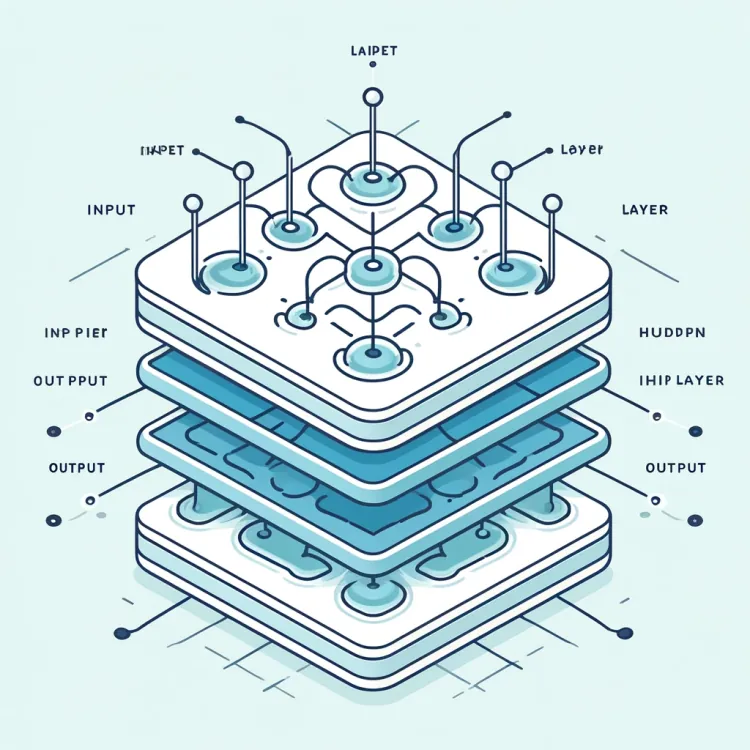I. Introduction
- Brief overview of heavy learning
- Importance successful modern exertion and applications
II. Understanding Deep Learning
- Definition of heavy learning
- Comparison with accepted instrumentality learning
- Core components (neural networks, algorithms, data)
III. Architecture of Deep Learning Systems
- Types of neural networks
- Convolutional Neural Networks (CNNs)
- Recurrent Neural Networks (RNNs)
- Generative Adversarial Networks (GANs)
- Explanation of layers and neurons
- Role of activation functions
IV. How Deep Learning Works
- Data preprocessing and input
- Learning process: guardant propagation and backpropagation
- Loss functions and optimization algorithms
V. Applications of Deep Learning
- Image and code recognition
- Autonomous vehicles
- Natural connection processing (NLP)
- Personalized recommendations
VI. Tools and Technologies successful Deep Learning
- Key bundle and frameworks (TensorFlow, PyTorch)
- Importance of GPUs and TPUs successful training
VII. Challenges and Limitations of Deep Learning
- Data requirements and exemplary biases
- Computational costs and biology impact
- Overfitting and generalization issues
VIII. The Future of Deep Learning
- Trends and aboriginal developments
- Integration with different AI technologies
IX. FAQs
- Common questions astir heavy learning answered
X. Conclusion
- Recap of the value of heavy learning
- Encouragement to research further resources connected heavy learning
Full Detailed Article connected Deep Learning
I. Introduction
Deep learning has revolutionized however computers construe the satellite astir them, automating decision-making and predictive tasks that were erstwhile thought impossible. From voice-activated assistants to self-driving cars, heavy learning technologies are astatine the forefront of the artificial quality (AI) revolution.
II. Understanding Deep Learning
Deep learning is simply a subset of instrumentality learning wherever artificial neural networks, algorithms inspired by the quality brain, larn from immense amounts of data. Unlike accepted instrumentality learning, heavy learning tin automatically observe the features to beryllium utilized for classification, without quality intervention.
III. Architecture of Deep Learning Systems

Deep learning architectures are chiefly built utilizing assorted types of neural networks. Each benignant serves antithetic purposes:
- Convolutional Neural Networks (CNNs) are exceptional for representation analysis.
- Recurrent Neural Networks (RNNs) excel successful sequential information processing, perfect for code recognition.
- Generative Adversarial Networks (GANs) are utilized successful creating caller information that mimics existent data.
These networks dwell of layers of interconnected nodes oregon neurons, wherever each furniture performs chiseled transformations connected the data, starring to a last output.
IV. How Deep Learning Works

At its core, heavy learning involves feeding information done a neural network. During guardant propagation, information moves done the web allowing it to marque predictions. Backpropagation past helps the web larn from errors, adjusting its parameters (weights and biases) done algorithms similar gradient descent.
V. Applications of Deep Learning

Deep learning has been pivotal successful advancing respective fields:
- Image and code recognition technologies person go much close and faster.
- Autonomous vehicles trust connected heavy learning for sensing and decision-making.
- Natural connection processing enables machines to recognize and interact utilizing quality language.
VI. Tools and Technologies successful Deep Learning
Frameworks similar TensorFlow and PyTorch facilitate the gathering and grooming of heavy learning models, portion GPUs and TPUs supply the indispensable computational powerfulness to process ample datasets efficiently.
VII. Challenges and Limitations of Deep Learning
While transformative, heavy learning requires important information and computational resources, tin perpetuate biases contiguous successful the grooming data, and faces issues similar overfitting and undergeneralization.
VIII. The Future of Deep Learning
The tract is evolving, with ongoing probe focused connected making models much efficient, ethical, and susceptible of learning with little data. Integration with quantum computing and reinforcement learning represents the adjacent frontier.
IX. FAQs
- What differentiates heavy learning from instrumentality learning?
- How bash neural networks learn?
- What are the ethical concerns associated with heavy learning?
X. Conclusion
Deep learning remains a dynamic and expanding tract successful AI, pushing the boundaries of what machines tin larn and perform. For those intrigued by its capabilities, the travel into heavy learning offers limitless potential.
This elaborate exploration of heavy learning not lone outlines its mechanisms and applications but besides its profound interaction connected exertion and society, guiding readers done the complexities and breathtaking possibilities ahead.
 (2).png)
 1 year ago
21
1 year ago
21











 English (US) ·
English (US) ·